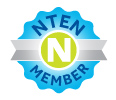My first reaction was why didn't they use NPOGroups? Britt hadn't even realized the service exists.
This highlights the basic question of capacity building. Technology is just a tool... so pick the tool that works... why worry about whether it builds the capacity of the nonprofit technology sector?
BUT as we imagine a world of web services and central databases of constitutents, the question becomes will Yahoo respond to nonprofit needs? Probably not... they don't represent a powerful customer base. Compumentor will not be able to use the information on Netsquared builders for future initiatives without some fancy import/export work.
In reality, we have a definition problem... what does capacity in nonprofit technology mean? The ecosystem that supports the nonprofit community as a matter of mission isn't particularly strong. In the nonprofit technology arena, it is almost exclusively vendors driven by profit as a primary motivator. In no way am I suggesting that nonprofit technology vendors aren't good folks, but they certainly aren't comitted to universal technology access for any nonprofit that wants to use technology tools.
I like to call the general negative reaction I get when I propose there should be more mission-focused nonprofit technology players the "sounds like socialism"problem. It's pretty clear that funders aren't going to bankroll the mission-driven nonprofit technology ecosystem, but there is no reason the sector itself can't fund a more grassroots, micro-enterprise, open sourcey community of companies, nonprofits and intermediaries.
Why support Yahoo when you can support three guys at Electric Embers that work every day for nonprofits to have better access to technology? Not sure there is a clear answer, but it's a good question.
[1/27 update]
Not that this happens alot at Yahoo Groups, but Nancy White highlights one groups the
Technorati Tags: net2, nptech, nonprofit

